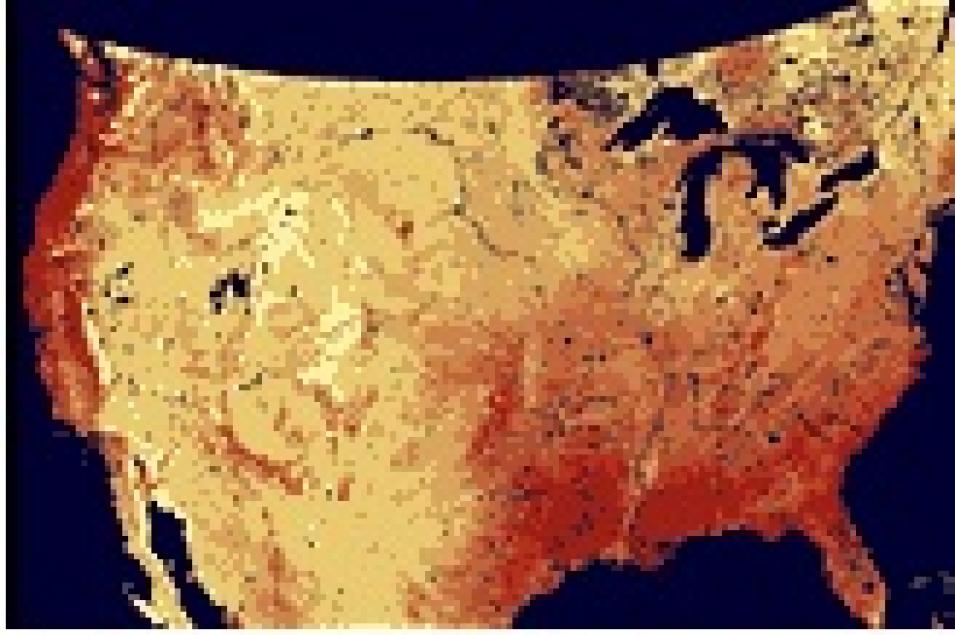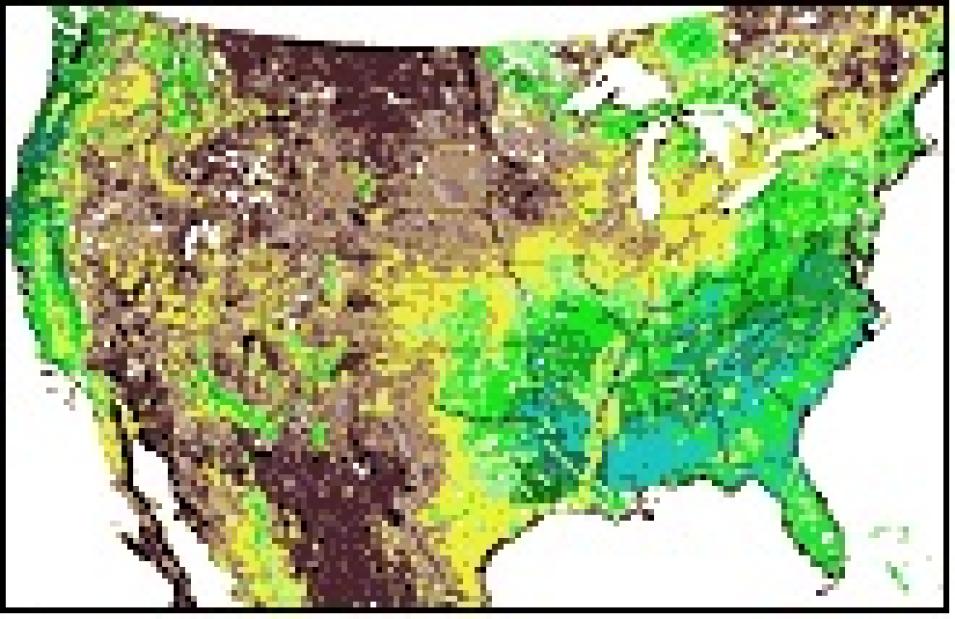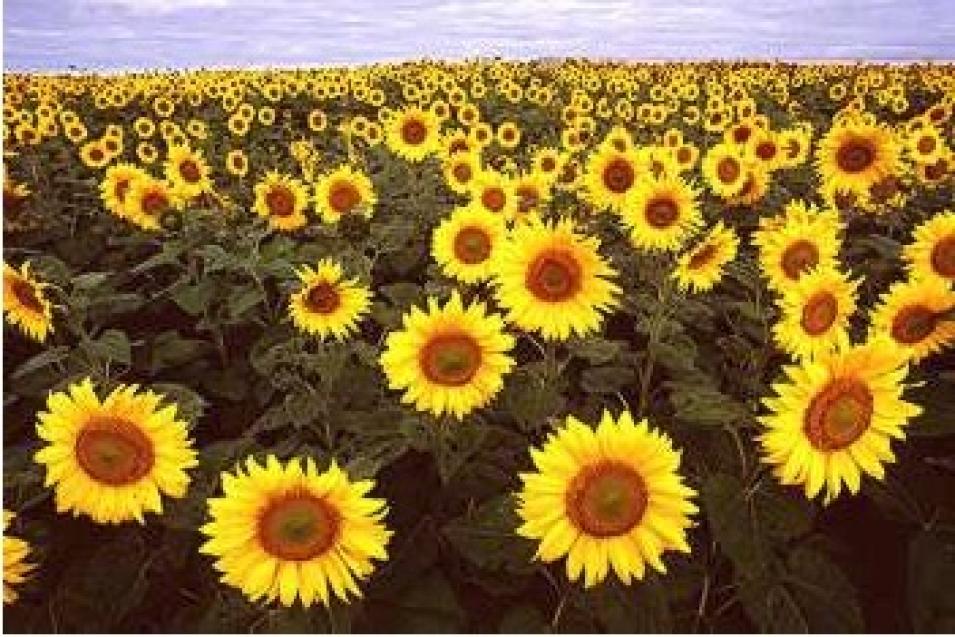Managing land means monitoring its health. Whether privately owned or public land, whether intended to produce crops, provide grazing for livestock, serve as a recreation site, provide a home, or remain an undisturbed ecosystem, land cannot be managed effectively without attention. Just as farmers must maintain crop productivity, public land managers must ensure that the areas they oversee can withstand the impacts of natural disasters and human activity.
Perspective on Plants
Traditionally, landowners and land managers have monitored their land's health through a variety of methods. Farmers have measured crop yields, range managers have measured forage production, and foresters have established growth plots to observe tree growth. Monitoring has also taken the old-fashioned form of driving around in a pickup truck and looking. But what about people who own or manage millions of acres?
"Sometimes, you need a bigger perspective than a pickup truck windshield," says Steven Running, Professor and Director of the Numerical Terradynamic Simulation Group (NTSG) at the University of Montana. With the launch of the Terra spacecraft in December 1999, giving landowners and managers that bigger perspective has become much easier. Aboard NASA's Terra satellite, the Moderate Resolution Imaging Spectroradiometer (MODIS) monitors the Earth's atmosphere, oceans, and land, measuring both visible and invisible light at high resolution, and producing better quality data and images than earlier instruments.
A crucial part of MODIS Land Science is vegetation monitoring, and NTSG uses MODIS data to develop plant productivity maps. These maps include croplands, temperate and tropical forests, deserts, and tundra. "Our domain is the whole globe," says Running.
Why study vegetation so closely? "Since vegetation is the cornerstone of all biospheric development — all animals eat plants directly or indirectly — it's the fundamental measure of the Earth's habitability. So the most important thing our products can do is quantify whether global vegetation is declining in magnitude or vigor," Running says.
In the early 1980s, NASA invited Running, an ecologist and modeler, to participate in brainstorming sessions with 20 other scientists. The sessions were aimed at finding a way to closely monitor global change. In 1983, NASA published the results of the discussions, in a publication titled Land-Related Global Habitability Science Issues, and spent the remainder of the 1980s designing a system to measure global habitability.
What eventually emerged was the Earth Observing System, conceived in 1990. Running's association with the program continued; from 1988 to 1998, NTSG concentrated on MODIS algorithms. In 1998, as the Terra launch approached, NTSG shifted its focus to creating more directly usable products. Results of this shift include Leaf Area Index and Fraction of Photosynthetically Available Radiation (LAI/FPAR), Photosynthesis (PSN), and Net Primary Productivity (NPP) products.
As Running explains, LAI/FPAR are simply two different sides of the same coin. NTSG uses infrared and red channels on the MODIS sensor to calculate the proportion of ground surface covered by vegetation. (To learn more about remote sensing channels, see NASA Earth Observatory's Remote Sensing Overview.) Once LAI is calculated, NTSG then generates FPAR by determining how much radiation is absorbed by the vegetation canopy, compared to the total available sunlight. LAI/FPAR are the basis for higher level vegetation products. Generating higher level products means taking into account one of the Earth's most changeable features: weather. Temperature and moisture both play a part in plant productivity. So do clouds.
"On any given day, something like half the globe is covered by clouds, and there's no use looking at them if you don't have to," says Running. To determine how much sunlight is being absorbed, NTSG adds daily surface weather data from NASA's Data Assimilation Office to its own data. By isolating the cloud-free pixels from each orbit, NTSG algorithms piece together an artificially cloudless image, or at least an image as free from clouds as possible. NTSG uses this data to calculate a refined measurement of photosynthesis. This, combined with a measurement of how much carbon dioxide is absorbed from the atmosphere, is used to calculate plant growth, or NPP.
Every eight days, NTSG releases new versions of LAI/FPAR, PSN, and NPP. These products are available to land managers responsible for government-owned land, including the Forest Service, the Bureau of Land Management, and national parks. Private landowners are also welcome to use the products. The land vegetation data are archived at NASA's Land Processes Distributed Active Archive Center (LP DAAC).
So far, MODIS is living up to all expectations, but NTSG does not yet have enough data to predict long-term trends. Running estimates that will take three to five years, but he's glad to see the process has started. "If vegetation is beginning to decline, due to land use, pollution, climate, or anything else, we want to quantify where the change is occurring and how fast it's occurring. This may be the most important early warning sign."
References
Running, S.W., 2000: Why the Earth Observing System matters to all of us. Earth Observer, 12(1), pp. 9-10. Also available in the NASA Earth Observatory
Running, S.W., D.D. Baldocchi, D.P.Turner, S.T. Gower, P.S. Bakwin, and K.A. Hibbard, 1999: A global terrestrial monitoring network integrating tower fluxes, flask sampling, ecosystem modeling and EOS satellite data. Remote Sensing of Environment Special Issue: Global Terrestrial Validation, 70, pp. 108-127.
For more information
NASA Land Processes Distributed Active Archive Center (LP DAAC)
Numerical Terradynamic Simulation Group
Land Validation Data at NASA Oak Ridge National Laboratory DAAC (ORNL DAAC)
| About the remote sensing data used | ||
|---|---|---|
| Satellite | Terra | |
| Sensor | Moderate Resolution Imaging Spectroradiometer (MODIS) | |
| Parameters | MODIS and land management PSN NPP LAI/FPAR | |
| DAAC | NASA Land Processes Distributed Active Archive Center (LP DAAC) | |



